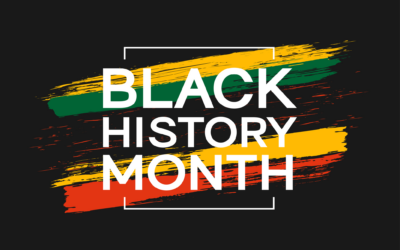San Francisco: A Business Traveller's Guide
your complete introduction to the home of the Golden Gate BridgeTravelling to San Francisco?
Are you planning on travelling to San Francisco for work? Get to know the cultural centre of Northern California better in this comprehensive guide for business travellers.
San Francisco has been a bustling financial centre ever since the heady Gold Rush days of the mid-1800s. The Californian city, defined the world over by the sweeping, red-steel stretch of the Golden Gate Bridge, is the seat of the Pacific Stock Exchange and the home to many banking HQs including Wells Fargo.
With world-class infrastructure and a reputation for fostering innovation in the world-renowned Silicon Valley, San Francisco is a tantalising destination for business travellers. But it’s not all black suits and boardrooms; the Bay Area beaches and sun-kissed streets are brimming with artistic and cultural delights which give a unique flavour of the USA.
In this comprehensive guide to San Francisco for business travellers, we delve deeper into navigating the city’s unique corporate landscape, offer our top tips for getting around, and pick out our top 3 things to see or do to make your trip unforgettable.
San Francisco Fact File

Seal of the City and County of San Francisco.
Languages
English
Currency
American Dollars ($)
Avg. Temperatures
Spring (Mar-May) = 17°C (62°F)
Summer (Jun-Aug) = 22°C (72°F)
Autumn (Sep-Nov) = 18°C (65°F)
Winter (Dec-Feb) = 12°C (53°F).
Getting To San Francisco
By Air
When it comes to flights into San Francisco, you’re spoilt for choice. The largest airport is the San Francisco International Airport (SFO), located about 15 miles (24km) south of the city centre, but you can also arrive via San Jose International Airport (SJC) about 45 miles (72km) south or Oakland International Airport (OAK) about 20 miles (32km) to the east.
By Road
The most popular road route is via Interstate 5 (I-5), which runs along the Pacific Coast and offers stunning views. However, consider the Pacific Coast Highway (Highway 1) for a more scenic but potentially longer route. Some highways in California have tolls, so be prepared to pay. Consider purchasing a FasTrak transponder for faster and more convenient toll payments.
By Rail
The most common rail route is via Amtrak’s Coast Starlight, which runs along the Pacific Coast from Los Angeles to Seattle. This scenic train journey offers stunning views of the Pacific Ocean, mountains, and coastal towns. This train departs from several cities along the West Coast of North America, including Los Angeles, San Diego, Santa Barbara, and Portland.
Business Culture & Etiquette
San Francisco has a uniquely Californian approach to business that marries professionalism with the laid-back lifestyle of the US West Coast. There is a strong emphasis on work-life balance and a more casual dress code, particularly in the city’s thriving Silicon Valley tech industry
Many local companies do away with the traditionally strict adherence to the 9-5 model, seeing more value in driving innovation and getting the best out of employees by offering more flexible timeframes.
As a city in the naturally beautiful Bay Area, businesses in San Francisco tend to be environmentally conscious and be involved in green initiatives. Don’t be surprised to find discussions about climate change and other environmental issues on the meeting agenda.
Here are some other business culture & etiquette tips:
- San Francisco is credited with popularising the coworking space concept. Companies often offer flexible workspaces to foster collaboration.
- A San Franciscan phenomenon is known as the “Fog City Effect”. The area’s traditionally foggy weather has been said to have played a role in shaping the local culture – the sense of isolation created by the fog is allegedly why San Franciscans are so self-reliant in business.
Crime & Safety
The overall crime rate in San Francisco has steadily declined in recent years, with the overall number of offences decreasing by 33.2% between 2023 and 2024 according to the San Francisco Police crime dashboard.
Most areas of San Francisco are considered safe for locals and travellers alike, but there are a few neighbourhoods in which it is important to stay vigilant, particularly the Tenderloin, Mission District, and Bayview-Hunter’s Point. While it’s not necessary to avoid these neighbourhoods entirely, it’s advisable to exercise caution when travelling to or through them.
San Francisco is also known for its fog. Be cautious when walking or driving in foggy conditions when visibility can be limited. Earthquakes are also a possibility, even though they are relatively rare. It’s therefore a good idea to know what to do in case of an earthquake and to familiarise yourself with the city’s emergency plans.
Here are a few of our other top safety tips:
- In San Francisco, the emergency number for police, fire, and ambulance services is 911.
- San Francisco is a hilly city. Wear comfortable shoes and be aware of uneven surfaces.
Getting Around San Francisco
Cable Cars
San Francisco’s cable cars are one of the city’s most iconic symbols. These historic vehicles have been transporting passengers up and down the city’s steep hills since 1873. Several lines serve the city. The Powell-Hyde line is the most popular of all the routes, offering stunning views of the city and the bay, while the California and Mason-Hyde lines remain busy. Cable cars stop at designated turnaround points. Look for the “Cable Car Turnaround” signs.
Ferries
San Francisco is a seafront city that surrounds a huge bay. As such, jumping on a ferry is both an affordable and convenient way of hopping from district to district. San Francisco’s ferry network connects the city to several other Bay Area destinations, including Sausalito and Vallejo, while also offering stunning views of the Golden Gate Bridge and Alcatraz Island. Tickets can be purchased online, at ferry terminals, or on board the ferry.
Bay Area Rapid Transit (BART)
The Bay Area Rapid Transit (BART) is a subway system that connects San Francisco to the surrounding cities, including Oakland and Berkeley. It operates a network of 49 stations and 11 lines, serving a wide area of the Bay Area. Tickets can be purchased at station kiosks or via the BART app which also provides real-time train information and maps.
Top 3 Things To See Or Do In San Francisco
If you find yourself with a bit of free time on your business trip, San Francisco is a city with a rich history and offers plenty to see and do. Here are our top 3 recommendations…

1. Golden Gate Bridge
As one of the world’s most iconic structures, the Golden Gate Bridge is a must-see for any visitor to San Francisco. Sitting 1.7 miles (2.7 km) long, the “International Orange” structure is one of the longest suspension bridges in the world – a feat that is even more impressive when you consider construction started in 1933.
The bridge is open to pedestrians and cyclists, offering stunning views of the city, the bay, and the Marin Headlands. There are also several picnic areas along the bridge’s trails, offering a great place to relax and enjoy the sweeping views.

2. Alcatraz Island
Alcatraz Island is a small, rocky island located in the San Francisco Bay. It’s best known for its former use as a federal prison, but it has a rich history dating back to the 1850s when it was used as a military base.
In 1934, Alcatraz became a federal penitentiary, housing some of the most notorious criminals in American history, including Al Capone and George “Machine Gun” Kelly. However, due to large operating costs and deteriorating infrastructure, the prison was closed in 1963.
Alcatraz is now a must-see attraction within the city. Tours of the former prison are guided and typically last around three hours. Plus, the ferry that takes visitors to the island offers stunning views of the San Francisco Bay and the Golden Gate Bridge.

3. Fisherman’s Wharf
Fisherman’s Wharf is a historic waterfront district in San Francisco, probably most known for its seafood restaurants that serve traditional clam chowder. It’s particularly bustling during the summer months.
There are several tourist attractions on Fisherman’s Wharf, including the San Francisco Maritime National Historical Park, the Cannery, and the iconic Pier 39 with its colony of sea lions.
San Francisco is a city that boasts stunning natural beauty and a bustling business scene.
The foggy city is not only a hub for financial corporations, it is also home to the famous Silicon Valley and the numerous tech startups with dreams of becoming the next Apple.
By understanding the laid-back local business culture, figuring out how to get around the city – whether by one of the iconic cable cars or via a ferry across the bay – and preparing for any potential safety issues, business travellers will discover that San Francisco is a treasure trove of opportunities.
Related Articles
The Pioneering Contributions of Black People to Air Travel
The history of black people in aviation reflects a wider struggle for equality, defined by exclusion, systemic racism, and a fight for recognition. In the early days of flight, opportunities for black people to enter aviation were extremely limited. In this article, we take a look at some of the black pioneers of the sky, explore how air travel was a tool of social justice, and glimpse into the future of diversity in the aviation industry.
World Menopause Day 2024
For World Menopause Day 2024, we find out more about the menopause, look into how you can manage the symptoms, and give you all the resources you need to learn more.
7 Ways to Save Money on Business Travel as an SME
Business travel can be a significant expense for any company, especially for small & medium enterprises (SMEs). Fortunately, there are several strategies SMEs can implement to save money without sacrificing efficiency or the well-being of their travellers. In this article, we identify 7 key areas where SMEs can optimise their business travel budget, book better, and spend smarter.
LET'S TALK
Fill in the form below and we'll get back to you as soon as we can.


